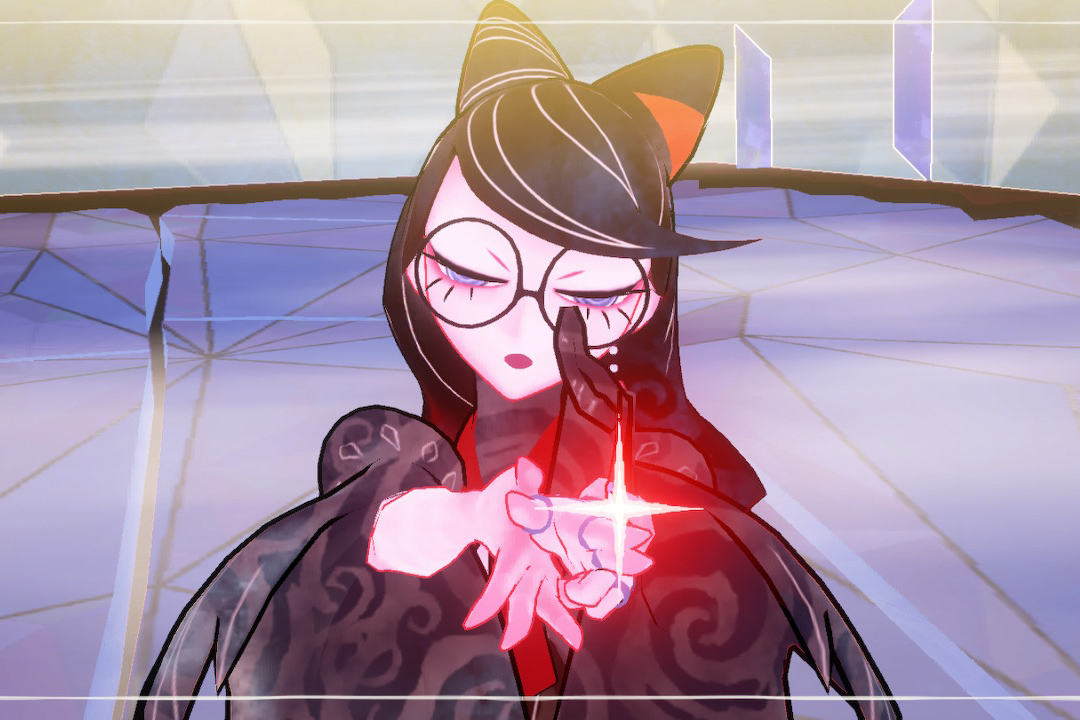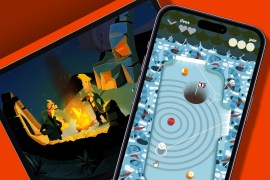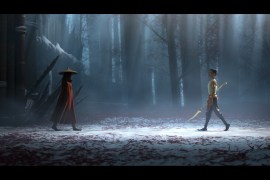Bayonetta Origins: Cereza and the Lost Demon review – bewitched
A prequel adventure with a surprisingly enchanting story

It’s hard going into this review of Bayonetta Origins: Cereza and the Lost Demon (that long subtitle making us wonder if it’s meant to be the first of a new series) without thinking just who it’s meant for.
With last year’s Bayonetta 3 basically drawing a line under the titular witch, it’s perhaps inevitable that the franchise continues via a prequel that explores her younger years – before she becomes the god-killing, angel-spanking Umbra Witch we know her as. Might this also be a way to make the often over-sexualised character more suitable for a family audience while also casting someone else as a teen Bayonetta, given the controversial replacement of her original voice actor in the last game?
Bayonetta Origins is also far removed from a high-octane character action game, instead opting for something more akin to an isometric puzzle adventure you might see from an indie developer – albeit one sold at full price. Yet underneath this is also a genuinely heartwarming surprise.
Cheshire grin


Going by her real name Cereza, Origins’ story takes us to a time when Bayonetta had yet to learn to fight with guns attached to her heels. Indeed, as an apprentice witch, she isn’t combat-trained at all and instead relies on a demon who resides inside a stuffed cat doll she carries called Cheshire.
In practice, this means you’re controlling two characters at the same time, which is as unwieldy as it sounds, like patting your head while rubbing your belly. That’s probably why combat is kept simple: Cereza uses magic to bind enemies while Cheshire mauls them. It’s a bit strange to have her basically taking a support role, as she can’t deal any direct damage (at best, a skill tree upgrade allows the demon to follow up with a more powerful attack after an enemy’s been bound), and in some cases you can just be running around avoiding getting hit while Cheshire does all the work.
Each character’s actions are also entirely mapped to a specific Joy-Con – Cereza’s on the left and Chehsire’s on the right. While that makes it weird to have to use the L shoulder button to interact with objects rather than A as you typically might, this does secretly make it a game that could feasibly play in couch co-op, with each person holding a single Joy-Con.
The game does give you breaks so you aren’t always controlling both characters at once. Cereza can turn Cheshire back into a stuffed cat at any point, which also charges up his magic gauge. In this form, you can also use the right stick to extend Cheshire, turning it into an inventive way of grabbing parts of the environment for traversal.
Lost in the forest


While there’s a fair bit of combat, especially as later challenges pit you against waves of enemies at a time, Origins is equally focused on solving puzzles. Making your way through the expansive Avalon Forest, home to menacing faeries not at all resembling the Tinkerbells you might be more familiar with, requires Cereza and Cheshire to work together – first following the tracks of the mysterious White Wolf and then tasked with destroying the forest’s four Elemental Cores.
These cores also grant Cheshire plant, rock, water, and fire-based elemental power-ups. That means you have new ways to exploit enemy weaknesses in combat, but these powers ultimately take you further from the fast-paced action of the mainline games to more Zelda and Metroid-style puzzles as you use these abilities to interact with parts of the environment and in turn reach new areas. It’s all elegantly designed and never feels like you’re just going through the same colour-coded puzzles. There’ll be times you need to switch between elements on the fly, hence why they’re neatly mapped to different face buttons.
For those looking to explore every inch of the forest, it might prompt you to revisit earlier areas to interact with objects you couldn’t previously, as there are plenty of collectible logs and challenges to find. The latter half of the game also gives you the ability to fast-travel between certain rest points to make back-tracking a bit easier.
Yet despite the forest being mostly designed as narrow paths, we found it quite easy to get lost at times if you’re not sticking to the main story path. Besides that, there seems to be a general lack of detail on the map, such as knowing where you have or haven’t been before, and the angle of the fixed camera had us struggling to parse what we see on the map with what we can see on screen. That’s before working out whether it’s a path that can be reached only by Cereza or Cheshire.
Faerie tales


The game’s strongest element lies in its approach to storytelling, a surprise for a series that usually has convoluted and nonsensical plots. Taking inspiration from Irish folklore, it commits to a fairytale vibe, from its illustrative art style to its narrator giving you the sense that you really are journeying through the pages of a children’s picture book.
We imagine some Bayonetta fans will be turned off seeing the usually unrestrained and cool witch feeling unsure about her abilities, sometimes in tears or being a scaredy cat, though it’s more believable given her depiction as a child still coming into her own. There have certainly been worse reimaginings of iconic female game protagonists (looking at you, Samus Aran in Metroid: Other M).
More important is the central relationship between Cereza and Cheshire, the latter meant to be a demon slave controlled by Umbra witches to do their bidding. The pair frequently clash, using each other as a means to an end, and there’s something amusing about how Cheshire’s voice is conveyed by the narrator as a curmudgeonly old man either scolding Cereza or pretending not to care when she tries to show some warmth.
But as their shaky alliance develops into something akin to friendship, the stakes ramped up by a pleasingly action-packed finale with some surprise twists as well as callbacks to the mainline series, this might be one of the most moving stories you’ll play in a game this year.
Bayonetta Origins: Cereza and the Lost Demon verdict


As a prequel spin-off, Bayonetta Origins trades the over-the-top action and campy plots of mainline Bayonetta gamers for a fairytale-inspired puzzle adventure that’s as enchanting as it is sombre, though that also gives it one of the better told stories in the series that’s capable of hitting you in the feels.
It’s a world away from what Bayonetta fans will be used to then, although the dual character control scheme still showcases Platinum Games as a developer who’s not afraid to stray from the norm in favour of experimental gameplay, with all the messiness that may entail. It may not be an essential entry but those interested in seeing a different side to the Umbra witch should give it a chance.
Stuff Says…
A minor Bayonetta spin-off that’s more Zelda-lite than action-packed – but with a story and aesthetic that wins you over.
Good Stuff
Beautiful story book stlye
The best story in the series
Could work as a couch co-op game
Bad Stuff
Not really the Bayonetta you know
Combat can be both simplistic and unwieldy
Easy to get lost



